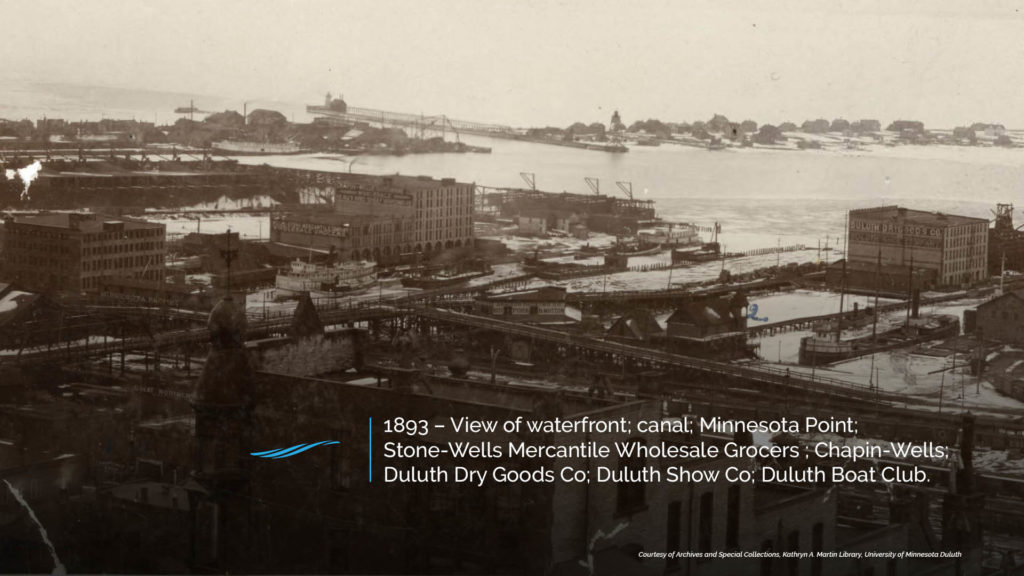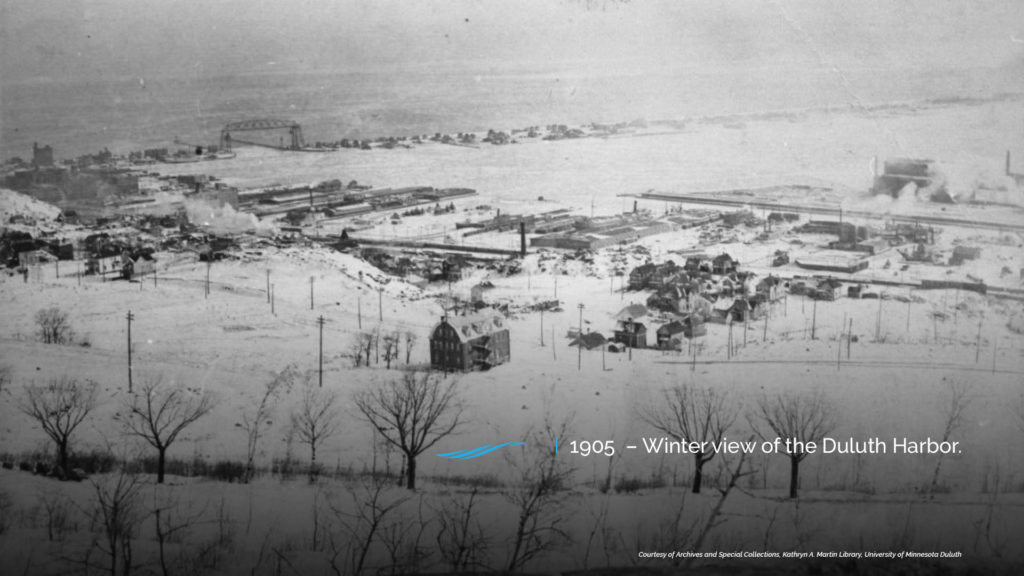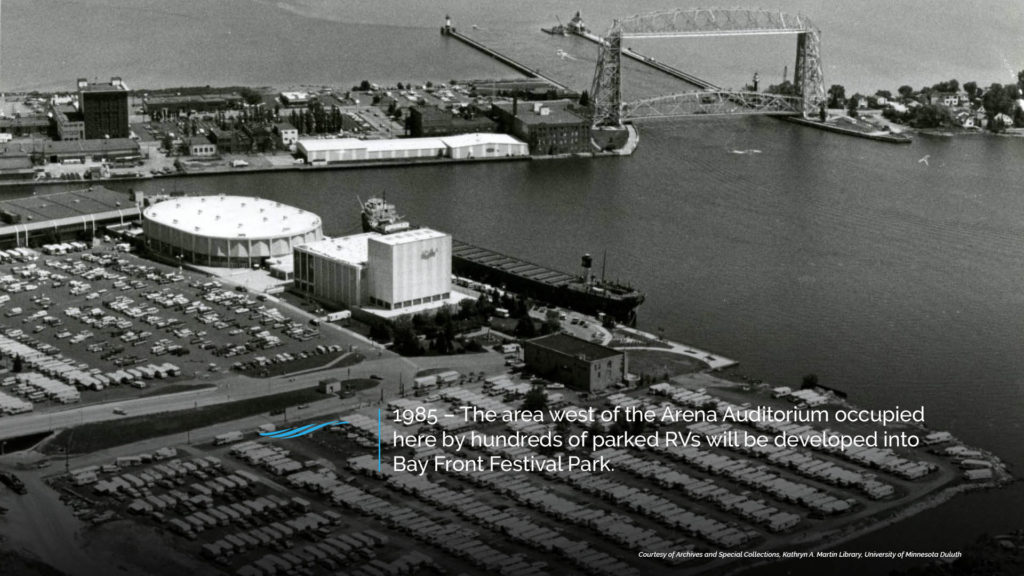History
During the late 1800’s the Duluth waterfront comprised floating bogs that extended approximately 300 feet north of the Pier B site. Transformation of the harbor shoreline commenced as a result of the rapid expansion of the mining and timber industries on the Iron Range, 100 miles to the north. Around 1883 construction of a train trestle occurred connecting Rice’s Point on the west to Canal Park on the east. The trestle formed what is now the approximate location of the developed waterfront. Construction of Pier B, as it was known, occurred in 1890 by Kelley Island Lime and Transport Company to facilitate the storage of limestone shipped by steamer from their mine on Kelley’s Island on Lake Erie. Pier B is comprised of 7.4 acres. By 1892, no less than 10 piers had been constructed along the harbor front to facilitate the rapidly growing mining and timber industries. These piers are now the location of the Duluth Entertainment and Convention Center, Great Lakes Aquarium and Bayfront Festival Park.
By 1920 Huron Portland Cement Company had constructed the four adjoining silos to facilitate the storage of powdered cement, a key ingredient for making concrete. The silos acted as a giant vacuum cleaner as they sucked the powdered cement from the ships into the four, 45 foot diameter silos. Attached to the east side of the silos was the “Bag House” a facility which distributed the powdered cement into bags for transportation. Bagging facilities were moved to a new 10,000-square-foot warehouse in the 1970’s and the former bag house was utilized to load trains and trucks for bulk distribution.
Lafarge Cement Company operated the facility until approximately 2008, when they consolidated operations to a facility in Superior, Wisconsin on the south side of the industrial waterfront. Recognizing the tremendous development potential, local developers Alessandro Giuliani and Sanford Hoff assembled a group of local investors and acquired the site. From the start, Giuliani and Hoff were dedicated to saving the historic 100 year-old silos to preserve the rich heritage of the site. While the silos will not be used during the initial development, they hold significant opportunity for future expansion.

 Call Today:
Call Today:























